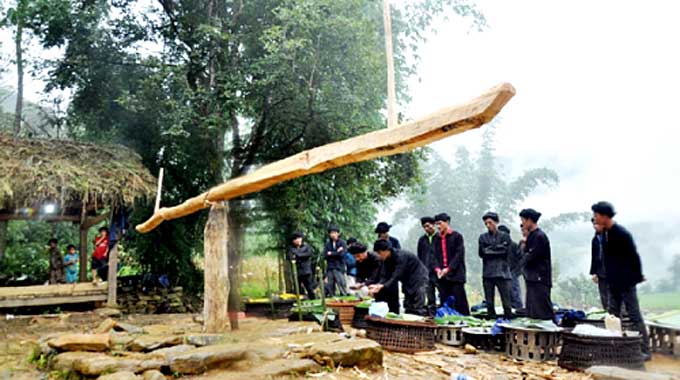‘Kho gia gia’, a traditional festival hosted by the Ha Nhi ethnic group in Bat Xat district, in the northern province of Lao Cai to pray for good crops, has been recognised as a national intangible cultural heritage.

The provincial People’s Committee held a ceremony on July 29 to receive a certificate from the Ministry of Culture, Sports and Tourism honouring this acknowledgement.
According to Vice Chairwoman of Bat Xat district People’s Committee Sung Thi Mai, ‘Kho gia gia’ is one of the major festivals of the Ha Nhi people. It is celebrated over five days, from the Day of the Dragon to the Day of the Monkey, in the sixth lunar month annually.
During the festival, people worship the gods of agriculture, forestry, water and soil, and pray for bumper crops, health, prosperity and happiness.
In preparation for the event, a buffalo is butchered as an offering to the gods. After the ritual, the buffalo’s meat is divided equally among households in the village as offerings to their ancestors in hopes for their support and protection in life.
The long-standing custom also features many other rituals and folk games, including tug of war, stick pushing and bag jumping. It is also a good opportunity for single boys and girls to make friends.
The traditional practice not only helps consolidate the solidarity among the community’s members, but has also developed into a unique tourism event to attract visitors to the locality.
The festival is the eighth heritage in Lao Cai province to be listed as national intangible culture heritage, after the ‘Then’ ritual of Tay ethnic group; 'Gau Tao', a spring festival praying for happiness and longevity of the Mong people; 'Cap Sac' (coming-of-age) rite of passage of the Dao; 'Roong Pooc' (going to the Field) festival of the Giay people in Ta Van commune, Sapa district; the 'Put Tong' ritual (a fire dance of selected shamans) of the Red Dao people in Sapa district; the silver carving of the Mong people in Sapa district; and 'Chang slaw' (the making of paper cut pictures) of the Nung Din people in Muong Khuong district.